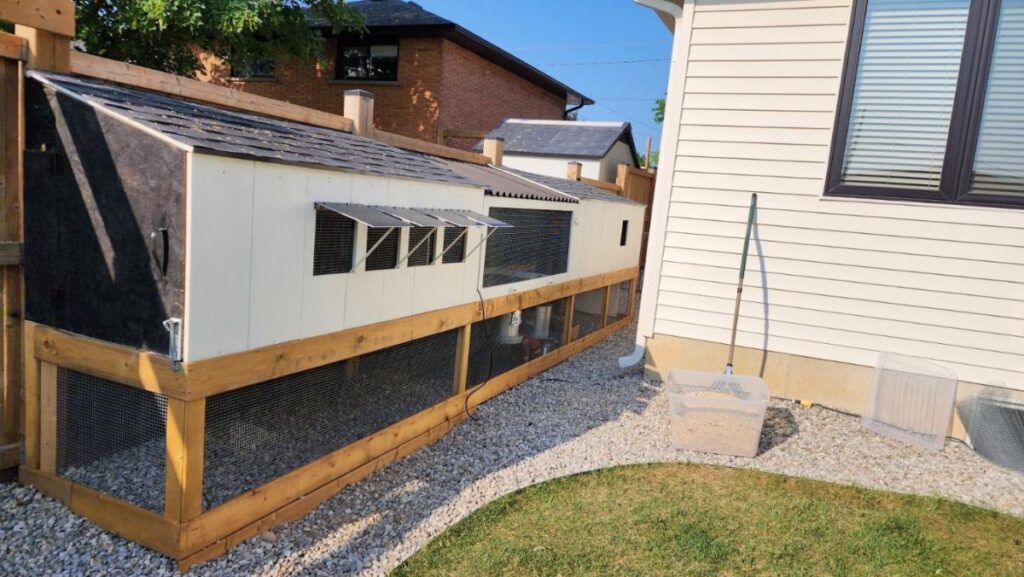
Having a beautiful and functional yard means adding features that improve your quality of life and increase your home’s value. A well-constructed chicken coop can be one of those features if done properly. A Chicken Coop is much more than an extra building on your property because it affects and determines the health and productivity of the chickens. And if you’re raising chickens for financial reasons, it plays a role in the profitability of the chickens. With a bit of imagination, you could improve the coop’s yard appeal, aid the circulation of yard space, and stimulate some of the chickens’ behaviors.
Design your chicken coop
To begin with, design a chicken coop and choose your size and location. Your chickens must have enough coop space. Make sure to provide a safe and comfortable environment with 2-3 sq. ft per chicken in the coop and 8-10 sq. ft per chicken in the outdoor run. The location should have the right amount of sunshine and shade, adequate drainage, and should be safe from flooding, strong winds, and sleet storms.
Chicken Coop Ventilation
Every chicken coop needs to have appropriate ventilation. Proper ventilation prevents moisture accumulation, reduces ammonia fumes, and limits dusty air which can bring respiratory problems to your flock. Windows, vents and adjustable openings will provide a consistent stream of air while avoiding drafts which can be dangerous in colder areas. The insulation system of the coop and its ventilation system should closely cooperate to provide a uniform temperature throughout the year.
Including Nesting Boxes and Perches
Including nesting boxes and perches in your coop design is also vital for the productivity and well-being of your chickens. For example, hens should have a calm and private nesting compartment. This will reduce the chances of your eggs becoming broken and soiled. As a rule of thumb, nesting boxes should be provided at the rate of one for every three to four hens. For their mental and physical well-being, chickens need to have the opportunity to roost at night and elevated perches will achieve that while also saving space in the coop. Perches also help to keep chickens off the floor which minimizes their exposure to waste and prevents the spread of diseases.
Safety of Chicken Coop
In designing a chicken coop, safety should be the top priority. Any backyard chicken coop is at risk of predatory attacks not just from hawks, but also raccoons, foxes, and snakes. Chicken coops should have effective predator-proof latches, solid reinforced doors, and predator-proof fencing.
Significance of Chicken Coop
Lighting may be an afterthought, but, in fact, it is an important component of a chicken coop. To sustain laying, hens require a specified number of light hours each day. During the shorter winter days, proper light distribution and the use of artificial lighting may be beneficial in stimulating laying. Proper coop lighting also improves flock and coop safety by improving visibility for the person taking care of the chickens during routine chores and activities.
Creativity and style
With a little thing called creativity and style, a chicken coop can change from a simple shelter to an appealing addition to your yard. How about some sustainable, reclaimed, or other more innovative materials? Maybe some landscaping or different, more vibrant colors to diversify your space. Beautiful chicken coops make backyard farming a lot more attractive, for both you and your neighbors.
Importance of the chicken coop
The chicken coop also provides more than shelter and the basic needs of your chickens. A well thought out chicken coop improves biosecurity and hygiene, protects against predation and provides an atmosphere where chickens can flourish. It also, and perhaps more importantly, gives your family and garden sustainable living through fresh eggs and organic fertilizer.
What to remember when building your coop
To wrap things up, laying out the design for a chicken coop in your backyard requires a good deal of planning, some attention to detail, and the interplay of function with some form. Every detail, be it choosing the right site and assuring appropriate ventilation or adding nesting boxes, perches, or even the security features, contributes to the success of your backyard flock. In every coop, the practicality and the chicken’s well-being ought to be paramount, but the aesthetic charm of the coop should not be left out. Designing a chicken coop, in the end, is a great way to receive the benefits of all your backyard’s utilities, while it is an investment in the well-being of your flock. For more information on caring for chickens in your backyard, the site Backyard Chickens is a great resource.
